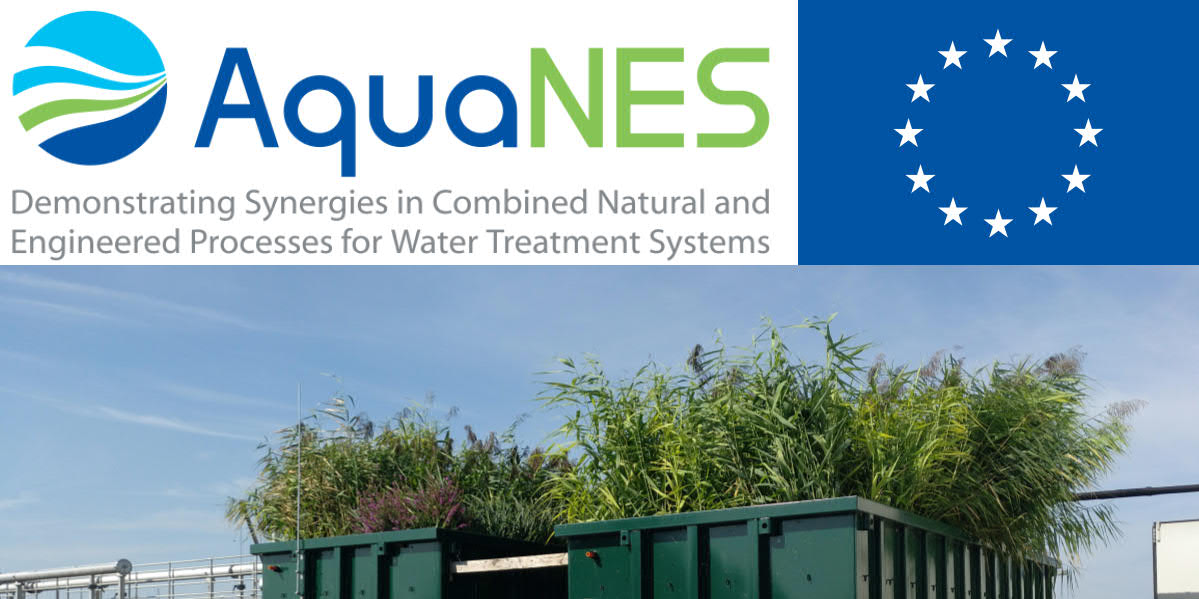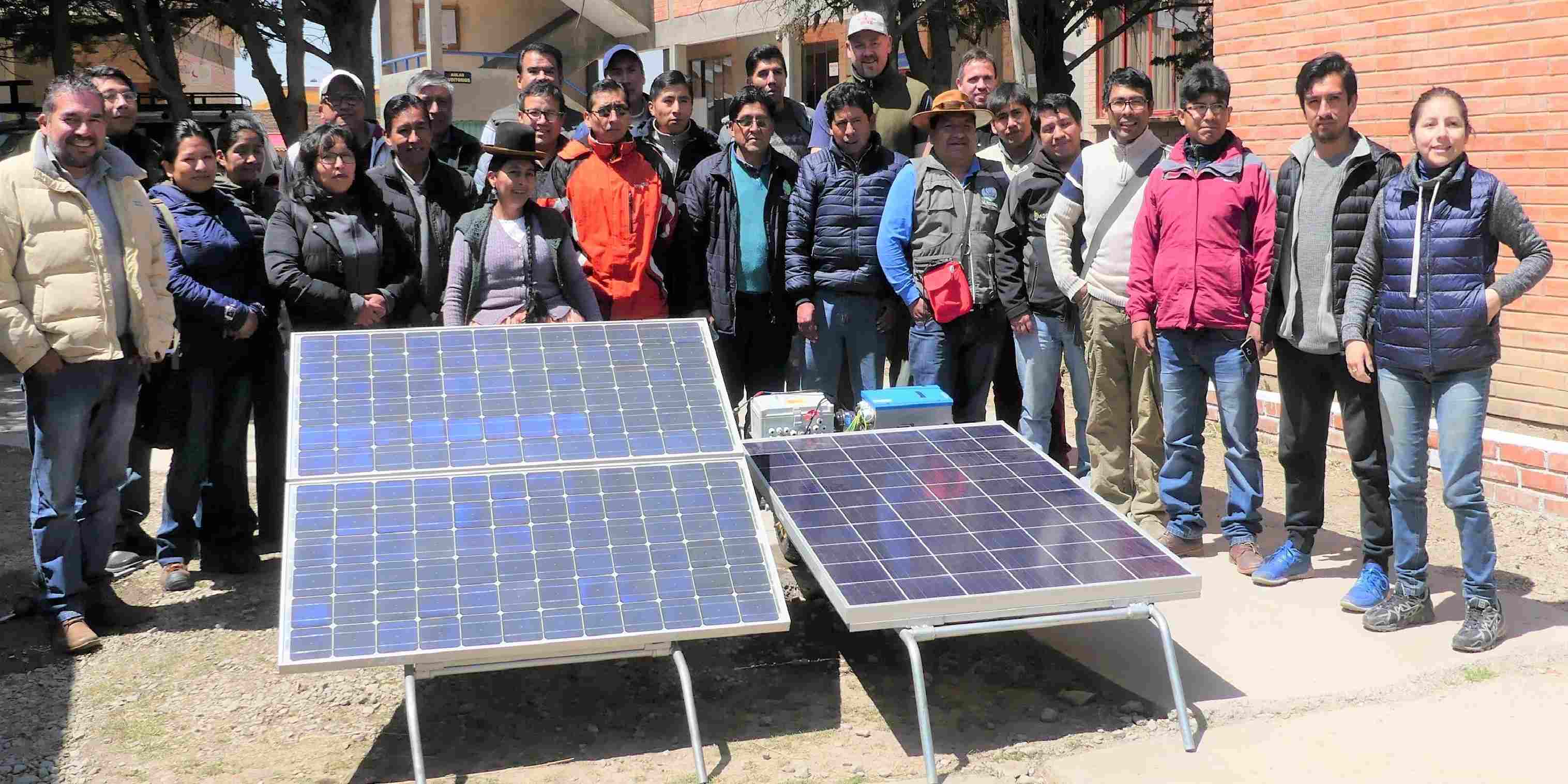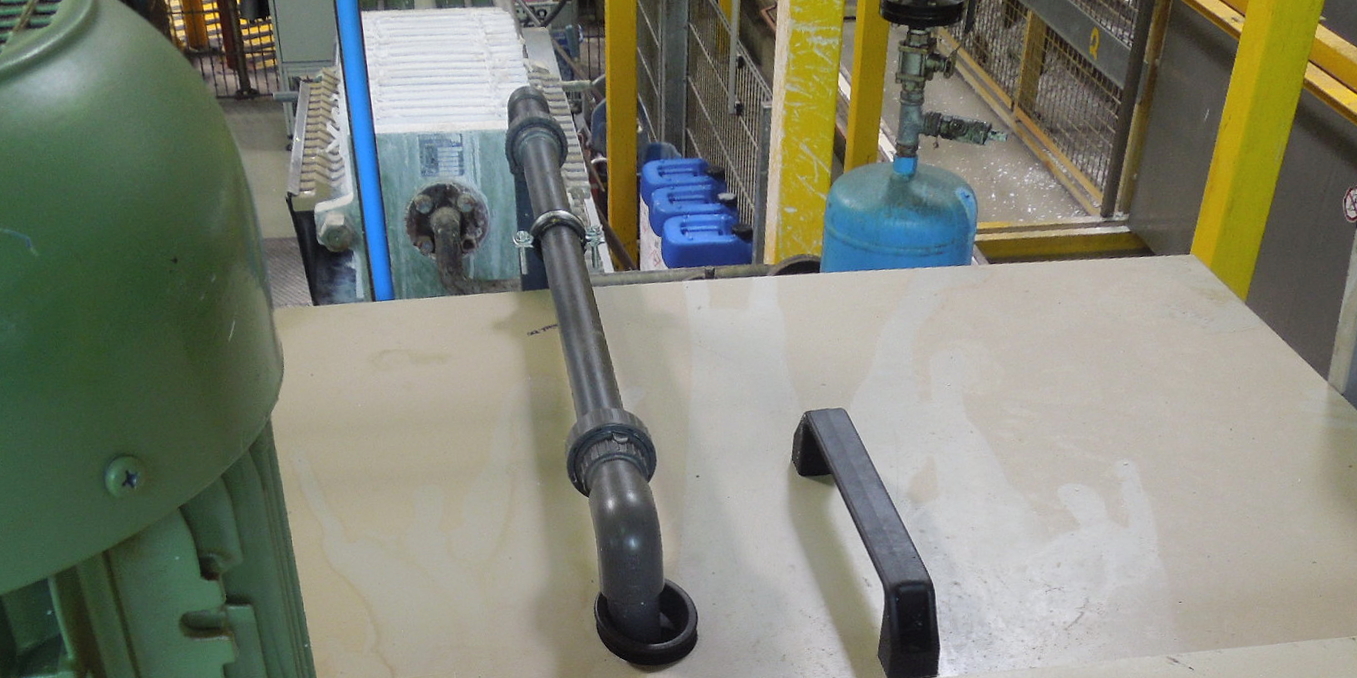

IWA Water Reuse 2019 in Berlin visits Hobrechtsfelde
Successful workshop on solar irrigation in Bolivia
BLUE PLANET Berlin Water Dialogues meets AquaNES
The conference “BLUE PLANET Berlin Water Dialogues meets AquaNES” will take place in Berlin on 09 April 2019 from 9 am to 5 pm. The conference meets every year to promote cooperation and knowledge exchange across industries. This spring, the research work and innovations of the Horizon 2020 project AquaNES will be specifically presented and debated through lectures, panel discussions and World Cafés.
AquaNES is a research network that investigates and promotes wastewater and drinking water treatment through a combination of near-natural and technical systems through 13 different demonstration projects in Europe, India and Israel. A wide range of climatic and hydrogeological factors will be covered and processes such as bank filtration, Managed Aquifer Recharge, Constructed Wetlands and technical pre- and post-treatment options will be tested and improved.
AKUT has been involved in the research project AquaNES since June 2016. Together with partner companies such as Berliner Wasserbetriebe (BWB), Kompetenzzentrum Wasser Berlin (KWB) and Erftverband, AKUT will present the results and hurdles of the combination of near-natural and technical systems for wastewater treatment and water treatment.
In cooperation with the BWB and the KWB, AKUT has developed a pilot plant at the Schönerlinde site to remove trace substances and pathogens from the effluent of the wastewater treatment plant. For this purpose, two different planted soil filters with upstream ozonation were built and their effect on improving water quality was investigated. Regina Gnirss (BWB) will present the results of the two-year pilot in her lecture “Ozonation combined with natural filtration processes – water quality gains”. In addition, Andrea Brunsch (Erftverband) will present the results of the pilot plant at the Rheinbach site in her lecture “Flexible use of modified retention soil filters to treat wastewater treatment plant effluent and combined sewer overflow”, in which a retention soil filter is used flexibly for the treatment of wastewater from wastewater treatment plants and mixed water overflows.
After the presentations AKUT and AUTARCON will lead the discussion group “Solutions for rural communities, remote locations and emerging countries” and will be available for questions and discussions on the topic.
The exact programme and further information on “BLUE PLANET Berlin Water Dialogues meets AquaNES” can be found at http://blueplanetberlin.de/next-event/ .

BLUE PLANET Berlin Water Dialogues meets AquaNES
Modification of industrial waste water treatment plant ensures phosphate discharge value
Successful workshop on solar irrigation in Bolivia
As part of the GIZ project “NEXUS – Water, Energy, Food Security”, a total of 36 participants were trained in a workshop on solar irrigation lasting several days in September 2018. The workshop took place in the Universidad Católica Boliviana (La Paz) and was attended by local and international experts, researchers and students as well as members of Bolivian institutions and authorities (e.g. Ministry of Environment and Water). The participants shall serve as multipliers by integrating the gained knowledge into their daily work.
The contents of the workshop included the topics renewable energies, description of typical photovoltaic applications with focus on agriculture, description and characterization of solar water pumps, irrigation needs and techniques, water needs, planning and design of solar irrigation systems, economic evaluation and financing of solar irrigation systems, description and practical application of the tool box “Solar powered irrigation systems” as well as practical applications and design of solar pump and irrigation systems.
The workshop can be classified as a success. More than half of the participants stated in an evaluation that they could apply the acquired knowledge in their field of work and all participants stated to be satisfied or very satisfied with the results of the workshop. As a result of the discussion between members of various stake holders the potential for solar irrigation in Bolivia could be classified as very high.
The workshop is one of several training cycles within the GIZ project “NEXUS – Water, Energy, Food Security”. This project, which runs from August 2017 to October 2019, includes workshops of this kind as well as the development of management models and financing concepts for two selected pilot projects with Nexus character and Integrated Water Resources Management (IWRM).
AKUT has been commissioned to provide advice for a multi-purpose dam project (Misicuni). A water distribution plan is to be elaborated in order to balance out the water use between agricultural use (irrigation), drinking water supply and secure energy production.
The adaptation to climate change (e.g. reduction of the available quantity of water, increased need for irrigation) shall be achieved through the development of proposals for the management of the limited resource of water with the various user groups.
A GIS-based open-source information system is to be set up in order to present and design the water supply and distribution in a transparent manner.
Another important objective of the project is poverty reduction. Solar irrigation should contribute to this by reducing water and energy consumption. In addition, poverty is to be reduced by reforestation and the introduction of agroforestry systems to sustainably improve land use in the upper reaches of catchment areas.
Picture: Group photo at the end of the workshop

Successful workshop on solar irrigation in Bolivia
Conversion of sewage gas into electricity in South Africa
Modification of industrial waste water treatment plant ensures phosphate discharge value
Companies that discharge production waste water into the sewage system (indirect dischargers) must comply with the discharge limit values of the respective wastewater utilities. If limit values are tightened the challenge is to develop particularly economical solutions that avoid the installation of a complete new wastewater treatment plant. AKUT was assigned to develop a solution for a similar situation regarding the wastewater discharge of the phosphating plant at Robert Bosch Automotive Steering GmbH in Berlin-Wittenau.
Current studies show that the implementation of technical adaptation and optimization measures at the chemical-physical waste water treatment plant has been successful in regards to tightened limit values. The measured total phosphate values in the discharge of the cleaning plant after the conversion have dropped to 90 percent less than the new limit values for discharge into the sewer system of Berliner-Wasserbetriebe (BWB).
The effluent limits for total phosphate were reduced to 50 mg/l by BWB beforehand.
Robert Bosch Automotive Steering GmbH had then decided to technically convert the existing plant for the removal of metal ions from wastewater to ensure compliance with the reduced phosphate discharge limit value.
AKUT Partner designed the cost-effective adaptation solution after an intensive assessment.
By converting, technically supplementing and optimizing the existing treatment plant, the phosphate is (now in addition to the previously precipitated metal ions) precipitated with automatically dosed lime and separated from the wastewater in an existing chamber filter press.
The contract included that the selected plant concept has been supervised and monitored until final acceptance and commissioning.
As requested by the customer the TÜV approval of the now semi-automatically operated chemical-physical wastewater treatment plant passed the plant without imposing any additional requirements.
Other relevant effects of the extensive automation of the wastewater treatment process are time savings for the operating personal and a reduction of the electric energy demand.
The low investment costs (compared to the installation of a new wastewater treatment plant) and the positive effects on operating costs increase the overall profitability of the phosphating plant in Berlin-Wittenau.
Photo: Robert Bosch Automotive Steering GmbH, Berlin – Wittenau. Buffer tank for the phosphate-containing wastewater, in the background the chamber filter press for separating the lime sludge.